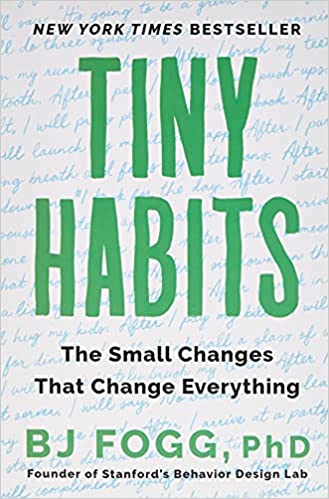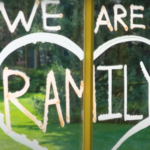By Angela Hayes, Associate Director of Alumni and Online Career Engagement
The presence of Covid has created all sorts of challenges in our day to day lives. Because of this threat that is both local and global in scope, we are all at some level of the fight or flight response most of the time. In addition to the challenges, there have been some unique opportunities as we evaluate what our lives were like pre-pandemic compared to our present circumstances.
Many of my alum clients have told me this year that they see their personal and professional lives very differently than they did prior to the pandemic. It’s as if the pandemic forced them to stop and really think about whether or not they were happy and fulfilled with the life they had been leading. Many have expressed gratitude, certainly not for the pandemic, but for the opportunity to have been forced to look at their lives more closely and with greater clarity.
If this has happened for you, and you’d like to make some changes based on how you feel about your personal and professional life, I’d recommend being gentle with yourself by making small changes that will eventually lead to big gains. Not only does research show that you will be more successful in achieving your goals if you start small, but starting small honors the fact that you might not be at your best right now. You might not be ready to tackle huge changes, no matter how much you might want to.
 I recommend the methods laid out by B.J. Fogg in his book, Tiny Habits: The Small Changes That Change Everything.
I recommend the methods laid out by B.J. Fogg in his book, Tiny Habits: The Small Changes That Change Everything.
Start Small
The main goal of the Tiny Habits method is to choose the things you’d like to change, and then create small habits, anchored to activities that you are already doing each day, to begin making those changes. You are going to be using personal behaviors and routines that you already do, to anchor in new, positive habits. The key is that the new habits need to be really small, because you want to get immediate, good, reinforcing feedback for doing this small habit. I promise you, it will grow exponentially from there, if you keep it very small in the beginning. Research shows that people have the most routines that they can tap into in the morning. As the day goes on, unexpected things come up that can easily throw things off track. So, the morning is a great time for creating new habits to build into the routines you already have.
So to start, when you are doing this process, you’ll want to list all of your daily habits. You’ll be using this list to anchor in new habits. This process works the best if you attach the new habit to something you are already doing, and it’s especially helpful if they have the same theme, like flossing one tooth right before or after brushing your teeth or wiping down one counter after you have fixed your breakfast and are just about to leave the kitchen.
Anchor Moments
These anchors that you choose need to be specific events. If it’s fuzzy like “after dinner” or “whenever I feel stressed” it doesn’t work to use them as an anchor behavior. You could think of them as Anchor Moments, which implies a precise moment in time. Let’s say that you want to start exercising regularly, eat healthy, start meditating, floss regularly, and get better sleep. Start pairing the new habits with the best anchor for that particular habit that you want to start. Take 3 things into account:
1) The physical location. Consider the physical location of the new habit and pick an anchor that you already do at that location. If you want the habit to be wiping down the counter tops, have the anchor be something that you are already doing in the kitchen. If you need to switch locations, you are less likely to carry out the behavior. So you wouldn’t want it to be something like, “after I load the dishwasher I will clean the trash out my car”. Being in the same physical location is the most important aspect of pairing anchors to new habits.
2) Match the frequency. Look at your existing routine and decide how often you want to do the new habit. If you want to do it once per day, then attach to an anchor that happens once per day. If you want it to happen 4 x’s per day, then attach it to an anchor that happens 4 x’s per day.
3) Match the theme/purpose. “After I water my Jade plant in the morning, I will drink a full glass of water, so that I nurture both the plant and myself.” “After I brush my teeth, I will sweep the garage” doesn’t match location, frequency or theme. If it’s not working, just change it. Experiment until you find what works. Discover what anchor works with what new behavior.
There are some key reasons why starting with tiny habits works so well. There are 3 things that are the most important, and need to happen at the same time, for a new behavior to occur, and for it to turn into a habit: Motivation, Ability and a Prompt. When a behavior doesn’t happen, at least one of these 3 elements is missing. If a behavior is easy to do, the prompt is there, and the motivation is high, the behavior will happen. So if it’s something really small, then you have the ability to do it. If you attach it to something you are already doing in your routine, that serves as the prompt. If it’s really small and you know that you’ll feel good about it and celebrate it, then you’ll likely have the motivation to do it as well. If you’ve picked the right tiny habits, you will eventually scale them up.
Scaling Up
So when do you scale up? About a year ago I started doing two kitchen counter push-ups each time I went into the kitchen to get another glass of water or tea, because I was recovering from rotator cuff surgery and it was part of what I was supposed to do for physical therapy. Doing just two became too easy, so after a couple of weeks I scaled up to 10 every time I went to the kitchen, and then 20. I don’t need to scale up any further than that because it leads to at least a 100 per day. When it comes to scaling up, there are two general categories: habits that grow and habits that multiply. The essence of the habits is the same, but you do more of them, or it’s that success in one area of habits multiplies into other related areas. So you are shooting for a bunch of tiny habit successes rather than one big one that takes a long time if you want to progress more quickly.
Select Small Habits
Craft your behaviors by selecting and adjusting the habits you want in your life. Some people like to work on lots of little, easy habits. Others like to tackle things that are a bit more challenging. Even if you go bigger, it’s best to first break them down into really small habits that you can succeed in right away, and then build from there. Most people who use this process pick 3 small habits and add 3 more each month. For example, you might have an exercise habit, a food-related habit and a productivity habit. Be flexible as you progress. Things that seemed important a couple of months ago might not be at all now, or you might have already mastered them. Starting small is the ultimate key to your success. You’re very unlikely to fail and you build your skills for that habit over time. Feeling successful leads to more new behaviors, with more successes and so on. When you succeed at something, your overall level of motivation goes up and you try harder behaviors, which lead to bigger overall successes.
I wish you all greater clarity and success in the New Year. Feel free to e-mail me at Angela.Hayes@colostate.edu if you would like help creating your plans for change.

ANGELA HAYES serves as the Associate Director of Alumni and Online Career Engagement. Prior to coming to CSU, she worked as the Assistant Director of Alumni and Graduate Student Career Services at Kansas State University. She has a B.S. in psychology, an M.S. in industrial/organizational psychology and a Ph.D. in professional coaching and human development. She’s a nationally Board Certified Coach and a nationally Certified Health and Wellness Coach.
She has a passion for helping others to see their lives as full of possibilities and un-tapped potential. She views changes/transitions (both planned and unplanned) as opportunities for individuals to discover and plan out what they really want from their careers and lives.


































































